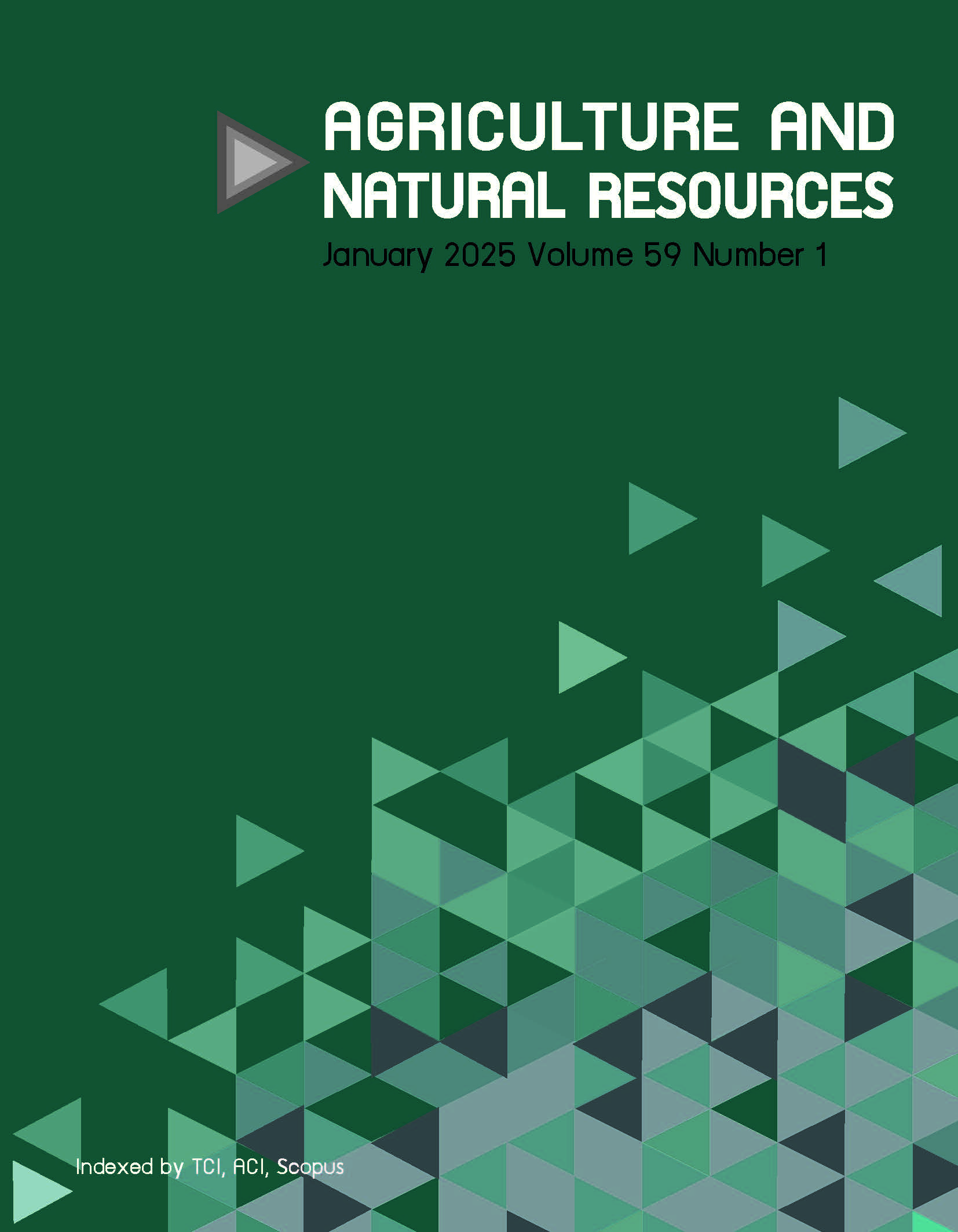Simulation and experimental study of biocoal production via dry torrefaction of palm empty fruit bunch
คำสำคัญ:
Biocoal production, Energy yield, Palm empty fruit bunch, Slow pyrolysis, Torrefactionบทคัดย่อ
Importance of the work: The optimum conditions of biocoal and techno-economic analysis are important in determining the potential of biocoal production based on a torrefaction.
Objectives: 1) To experiment with torrefaction for simulation; 2) to simulate and design biocoal production; and 3) to perform techno-economic analysis.
Materials & Methods: A palm empty fruit bunch (PEFB) sample from Thailand was used in the torrefaction experiment. The simulation used the Aspen Plus to model the torrefaction. Investment and optimization aimed to maximize profitability. The torrefaction temperature was set at 200-300°C, with a heating rate of 10°C/min and a residue time of 10-50 min.
Results: The yield of biocoal from PEFB at 300°C and a residue time of 30 min was 56.13%, which was higher than the biogas and bio-oil yields. There was a good correlation between the PEFB yield and the temperature factor at 300–320°C, suggesting that this temperature range influenced the yield of PEFB, making it a suitable biomass material for making biocoal. The simulation generated 1,876.25 t/d of PEFB at 300°C, producing 21,631.70 kg/hr of char, 14,530.29 kg/hr of gas, 1,279.31 kg/hr of bio-oil and 40,736.10 kg/hr of vapor. The optimal utility cost was USD 4.06 million, with a 20 yr life cycle and a total capital investment of USD 20.38 million.
Main finding: In the simulation using PEFB, the production of biocoal decreased with increasing temperature due to faster devolatilization and a reduction in carbon levels. The conceptual design of biocoal production was presented with supported data from experiments and techno-economic analysis.
ดาวน์โหลด
เผยแพร่แล้ว
รูปแบบการอ้างอิง
ฉบับ
ประเภทบทความ
สัญญาอนุญาต
ลิขสิทธิ์ (c) 2025 online 2452-316X print 2468-1458/Copyright © 2025. This is an open access article under the CC BY-NC-ND license (http://creativecommons.org/licenses/by-nc-nd/4.0/), production and hosting by Kasetsart University Research and Development Institute on behalf of Kasetsart University.online 2452-316X print 2468-1458/Copyright © 2022. This is an open access article under the CC BY-NC-ND license (http://creativecommons.org/licenses/by-nc-nd/4.0/),
production and hosting by Kasetsart University of Research and Development Institute on behalf of Kasetsart University.







